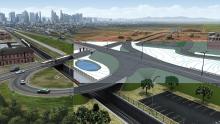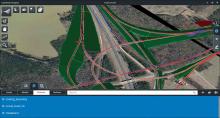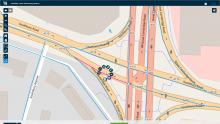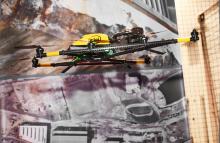Design and construction software specialist Bentley Systems is strengthening its position in the market with the introduction of new software advances as well as a series of strategic business moves. This allows the company to offer new solutions and technologies to its client base, as well as reaching out to new business segments
The firm is introducing an array of powerful tools to the market. A key launch is for the OpenRoads Designer CONNECT Edition, which is the successor to Bentley’s well-proven an
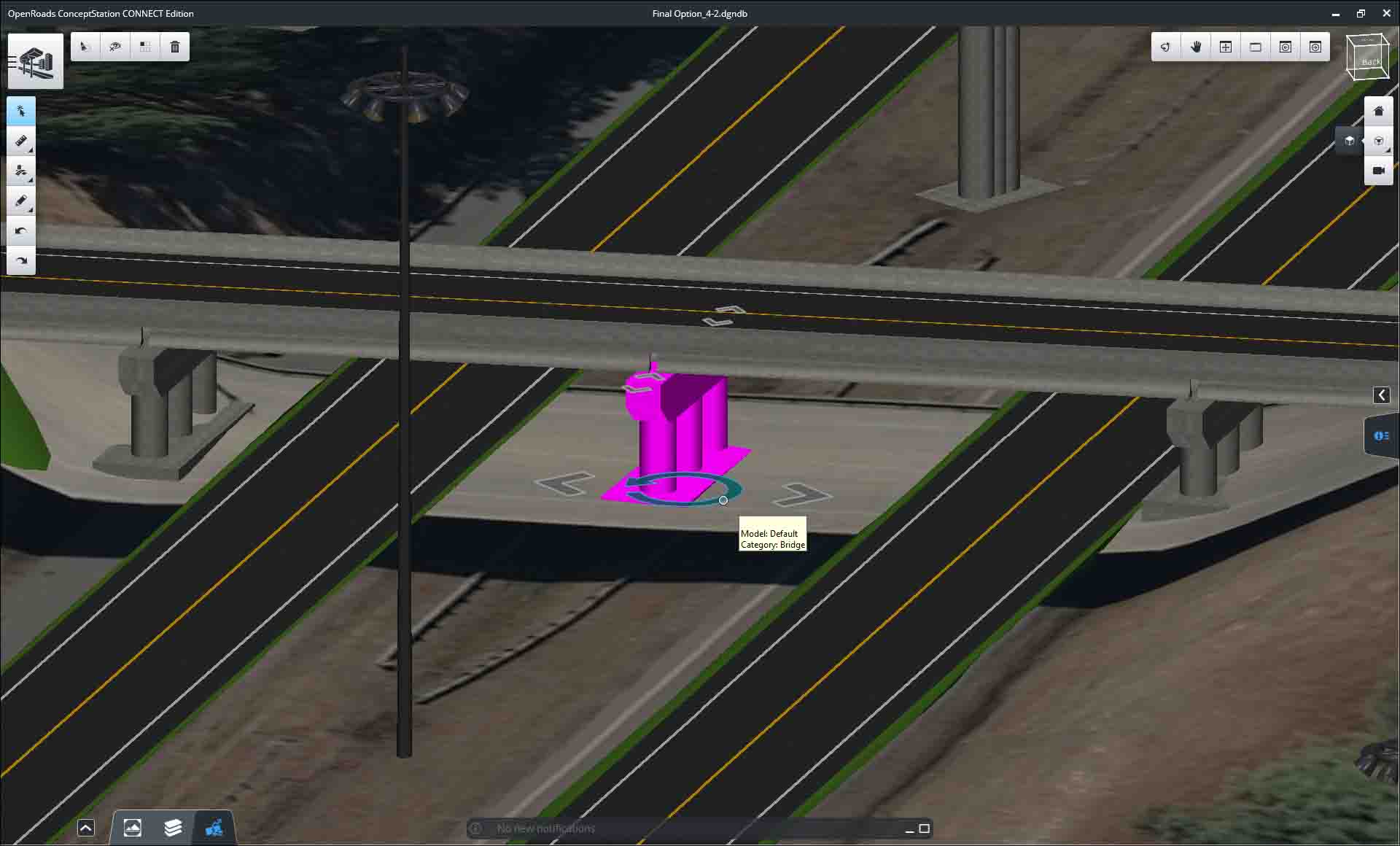
The ConceptStation tool provides improved project design capabilities
Design and construction software specialist Bentley Systems is strengthening its position in the market with the introduction of new software advances as well as a series of strategic business moves. This allows the company to offer new solutions and technologies to its client base, as well as reaching out to new business segments
The firm is introducing an array of powerful tools to the market. A key launch is for the OpenRoads Designer CONNECT Edition, which is the successor to6197 Bentley’s well-proven and highly successful civil engineering brands; InRoads, GEOPAK, MX, and PowerCivil.
OpenRoads Designer is a multi-discipline 3D modelling application for roadway projects and can handle tasks in the detailed design phase including surveying, drainage, subsurface utilities, and roadway design. Bentley Systems says that the package blends traditional engineering workflows for plan, profile and cross-sections with 3D parametric modelling to enable the model-centric creation of all design deliverables.
A key advance for the OpenRoads CONNECT Edition is that it integrates OpenRoads ConceptStation, OpenRoads Designer and OpenRoads Navigator. This ensures a comprehensive modelling environment for the delivery of roadway projects, streamlining and automating workflows across all disciplines to progress designs from conception to detailed design and through construction.
Proof in point has been the use of OpenRoads ConceptStation by3474 HNTB Corporation to provide designers the ability to quickly and efficiently evaluate different scenarios using the required design standards. HNTB relied on this new product to win the US$2 billion I-84 and SR-8 interchange project in Waterbury, CT, USA. HNTB’s biggest challenge was to implement a solution that would enable it to develop alternatives that met current design criteria, evaluate constructability, manage data across locations, visualise and review results, and deliver costings.
OpenRoads ConceptStation’s GeoCoordination Services saved time and money for the team by helping them locate and organise relevant project context at the beginning of the project. In addition, HNTB reduced conceptual design time by four days using OpenRoads ConceptStation as compared to the traditional detailed design workflow. The software also enabled the design team to pass conceptual design models, including horizontal and vertical geometry, seamlessly to the OpenRoads design products in the detailed design phase.
Using the embedded Bentley LumenRT engine, OpenRoads ConceptStation’s visualisation capabilities also allowed the team to rapidly review the complete project in a rich 3D environment and communicate options to all stakeholders involved. Due to the complexity and condensed footprint of the interchange, bridge clearance and pier locations were critical to design and constructability.
OpenBridge Modeler helped HNTB design and model all of the bridges within the same modelling environment, ensuring potential conflicts were identified and resolved early in the process. ProjectWise was used for storage of the refined project data and shared by key members of the project team to ensure efficient collaboration. Kevin Schlereth, PE, delivery technology group manager, HNTB Corporation, said, “Bentley’s understanding of design requirements has created a powerful tool for conceptual design. Today’s project schedules are getting shorter and shorter, and time savings are critical to project success.”
To further extend the return on investment (ROI) of design and construction applications, progressive clients, engineers and consultants are now utilising reality modelling. This describes the potentially continuous capture of infrastructure assets’ as-operated conditions for processing into engineering-ready reality meshes and their enlivening for immersive interaction. To date, reality modelling has processed digital photos acquired from ground-level and/or aerial photography, and in particular from the fast-growing industrial use of unmanned aerial vehicles (UAVs).
A significant breakthrough has also been made in ContextCapture. Point-clouds from laser scanning can now be combined with available photos, as “hybrid inputs,” for reconstruction into a reality mesh. An advantages of reality modelling in the case of laser scanning is the superior engineering-ready mesh result, compared to the bulky point-clouds themselves.
2794 Microsoft, 1134 Siemens and 342 Topcon.
ProjectWise CONNECT Edition and AssetWise CONNECT Edition leverage Microsoft’s Azure cloud services to advance beyond common data environments to connected data environments. Siemens and Bentley Systems have formalised a strategic alliance agreement to drive new business value by accelerating digitalisation to advance infrastructure project delivery and asset performance. This work will leverage new cloud services for a connected data environment to converge respective digital engineering models from both companies.
Bentley Systems and Topcon will cooperate in the field of cloud-based solution offerings. Initially, Bentley Systems will offer its ProjectWise CONNECT Edition users seamless connectivity with MAGNET Enterprise, while Topcon will incorporate ContextCapture image processing for its mass data collection via unmanned aerial systems (UAS).
Cloud services bring the site conditions to the engineers, with Topcon UAS photogrammetry and laser scanners delivering an accurate model of the current 3D context. This is then processed into engineering-ready 3D reality meshes by Bentley’s ContextCapture software. Cloud services convey the engineers’ work to construction processes in the field, improving project delivery. Design is performed in context, and the resulting digital engineering models feed the 3D machine control that guides the construction machinery.
The firm is introducing an array of powerful tools to the market. A key launch is for the OpenRoads Designer CONNECT Edition, which is the successor to
OpenRoads Designer is a multi-discipline 3D modelling application for roadway projects and can handle tasks in the detailed design phase including surveying, drainage, subsurface utilities, and roadway design. Bentley Systems says that the package blends traditional engineering workflows for plan, profile and cross-sections with 3D parametric modelling to enable the model-centric creation of all design deliverables.
A key advance for the OpenRoads CONNECT Edition is that it integrates OpenRoads ConceptStation, OpenRoads Designer and OpenRoads Navigator. This ensures a comprehensive modelling environment for the delivery of roadway projects, streamlining and automating workflows across all disciplines to progress designs from conception to detailed design and through construction.
Proof in point has been the use of OpenRoads ConceptStation by
OpenRoads ConceptStation’s GeoCoordination Services saved time and money for the team by helping them locate and organise relevant project context at the beginning of the project. In addition, HNTB reduced conceptual design time by four days using OpenRoads ConceptStation as compared to the traditional detailed design workflow. The software also enabled the design team to pass conceptual design models, including horizontal and vertical geometry, seamlessly to the OpenRoads design products in the detailed design phase.
Using the embedded Bentley LumenRT engine, OpenRoads ConceptStation’s visualisation capabilities also allowed the team to rapidly review the complete project in a rich 3D environment and communicate options to all stakeholders involved. Due to the complexity and condensed footprint of the interchange, bridge clearance and pier locations were critical to design and constructability.
OpenBridge Modeler helped HNTB design and model all of the bridges within the same modelling environment, ensuring potential conflicts were identified and resolved early in the process. ProjectWise was used for storage of the refined project data and shared by key members of the project team to ensure efficient collaboration. Kevin Schlereth, PE, delivery technology group manager, HNTB Corporation, said, “Bentley’s understanding of design requirements has created a powerful tool for conceptual design. Today’s project schedules are getting shorter and shorter, and time savings are critical to project success.”
To further extend the return on investment (ROI) of design and construction applications, progressive clients, engineers and consultants are now utilising reality modelling. This describes the potentially continuous capture of infrastructure assets’ as-operated conditions for processing into engineering-ready reality meshes and their enlivening for immersive interaction. To date, reality modelling has processed digital photos acquired from ground-level and/or aerial photography, and in particular from the fast-growing industrial use of unmanned aerial vehicles (UAVs).
A significant breakthrough has also been made in ContextCapture. Point-clouds from laser scanning can now be combined with available photos, as “hybrid inputs,” for reconstruction into a reality mesh. An advantages of reality modelling in the case of laser scanning is the superior engineering-ready mesh result, compared to the bulky point-clouds themselves.
Strategic partnerships
Key corporate moves are the agreements Bentley Systems has established with technology leadersProjectWise CONNECT Edition and AssetWise CONNECT Edition leverage Microsoft’s Azure cloud services to advance beyond common data environments to connected data environments. Siemens and Bentley Systems have formalised a strategic alliance agreement to drive new business value by accelerating digitalisation to advance infrastructure project delivery and asset performance. This work will leverage new cloud services for a connected data environment to converge respective digital engineering models from both companies.
Bentley Systems and Topcon will cooperate in the field of cloud-based solution offerings. Initially, Bentley Systems will offer its ProjectWise CONNECT Edition users seamless connectivity with MAGNET Enterprise, while Topcon will incorporate ContextCapture image processing for its mass data collection via unmanned aerial systems (UAS).
Cloud services bring the site conditions to the engineers, with Topcon UAS photogrammetry and laser scanners delivering an accurate model of the current 3D context. This is then processed into engineering-ready 3D reality meshes by Bentley’s ContextCapture software. Cloud services convey the engineers’ work to construction processes in the field, improving project delivery. Design is performed in context, and the resulting digital engineering models feed the 3D machine control that guides the construction machinery.

